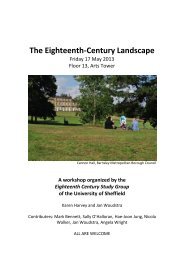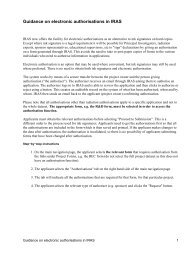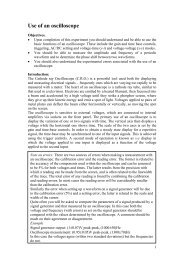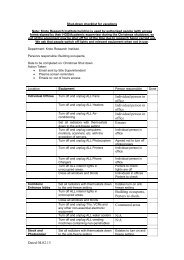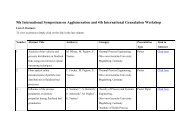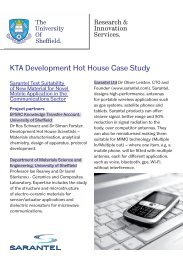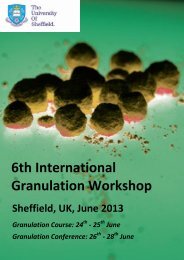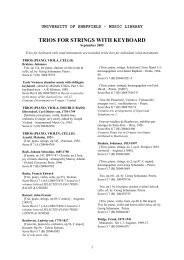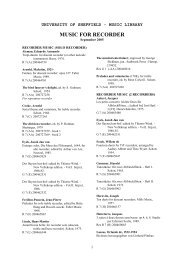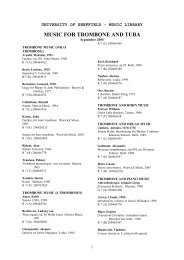Huron & SNAP Documentation
Huron & SNAP Documentation
Huron & SNAP Documentation
You also want an ePaper? Increase the reach of your titles
YUMPU automatically turns print PDFs into web optimized ePapers that Google loves.
↓ To select an Output mode<br />
Select microphone<br />
Directivity Factor Name<br />
d = 0.000 Omni<br />
d = 0.500 Cardioid<br />
d = 0.625 Super Cardioid<br />
d = 0.750 Hyper Cardioid<br />
d = 1.000 Figure 8 or Dipole<br />
OTHER SIMULATION TOOLS<br />
• AniScape mode returns a direct sound response with the first<br />
order (early) reflections missing (this is because AniScape<br />
provides the first order reflections during a simulation).<br />
• Static mode returns a sound response file which includes the<br />
first order reflections of the simulated room, this means that<br />
the sound object will appear to be “static” in the room (first<br />
order reflections will always appear to come from the same<br />
place).<br />
It is possible to use AniScape mode sound response files with<br />
MultiScape and Space Array. However, MultiScape and Space<br />
Array do not add first order reflections during a simulation.<br />
When producing a room response for a MultiScape or Space<br />
Array simulation AniScape mode is preferred over the static<br />
mode, as static impulse responses will not appear to move<br />
through the Soundscape correctly (ie. the first order reflections<br />
do not change locations while later reflections do).<br />
When AniScape mode is selected the Make Room application<br />
will produce a room geometry file (*.GEO). The *.GEO file is<br />
a text file containing information on the room’s attributes used<br />
to calculate first order responses during an AniScape<br />
simulation.<br />
• Click Static for Static mode output.<br />
— or —<br />
Click AniScape for AniScape mode output.<br />
There are three types of microphone simulated in the Make<br />
Room application. Each microphone type mimics the<br />
properties and produces signal files which mirror the signals<br />
generated by their real life counterparts.<br />
Most microphones (with the exception of B-format<br />
microphones), have characteristic sensitivity lobes. These lobes<br />
correspond to the sensitivity of the microphones in certain<br />
directions. In the Make Room application this effect is<br />
simulated by including a directivity factor for the microphone in<br />
calculations.<br />
The Directivity Factor which describes the characteristic sound<br />
lobes of a Microphone are described in the table below.<br />
The three types of microphone simulated in Make Room are<br />
Mono, Stereo and B-format. Each type, their properties and<br />
resultant responses are described below:<br />
Mono Microphone: This setting allows the simulation of a<br />
simple monophonic microphone. The microphone is<br />
HURON TECHNICAL MANUAL PAGE 153



